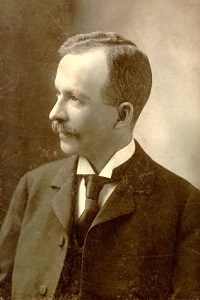
Charles Waddell Chesnutt
Charles Waddell Chesnutt (1858—1932), with the local-color dialect story, entered the American literary scene in 1889. Like Thomas Nelson Page and Joel Chandler Harris, Chesnutt created a benevolent, unctuous old black uncle who told stories to the white folks. But Chesnutt’s Uncle Julius, the tale-teller of his first book, The Conjure Woman (1899), had objectives that were very different from those of Page and Harris. Chesnutt—as a black man—used stories of conjuring to enable his white audience to see life on the plantation from the slave’s point of view. The picture he presented was far different from—and less attractive than—than the way in which white authors had portrayed it. George W. Cable was among the earliest admirers of Chesnutt’s writing and sought to help him get his stories published. Chesnutt’s first story, for the Atlantic Monthly, without his race being identified; the editors felt that readers might be offended. Chesnutt taught school, tried journalism, then settled in Cleveland, where he became a skilled court stenographer, read law, and was admitted to the Ohio bar.






